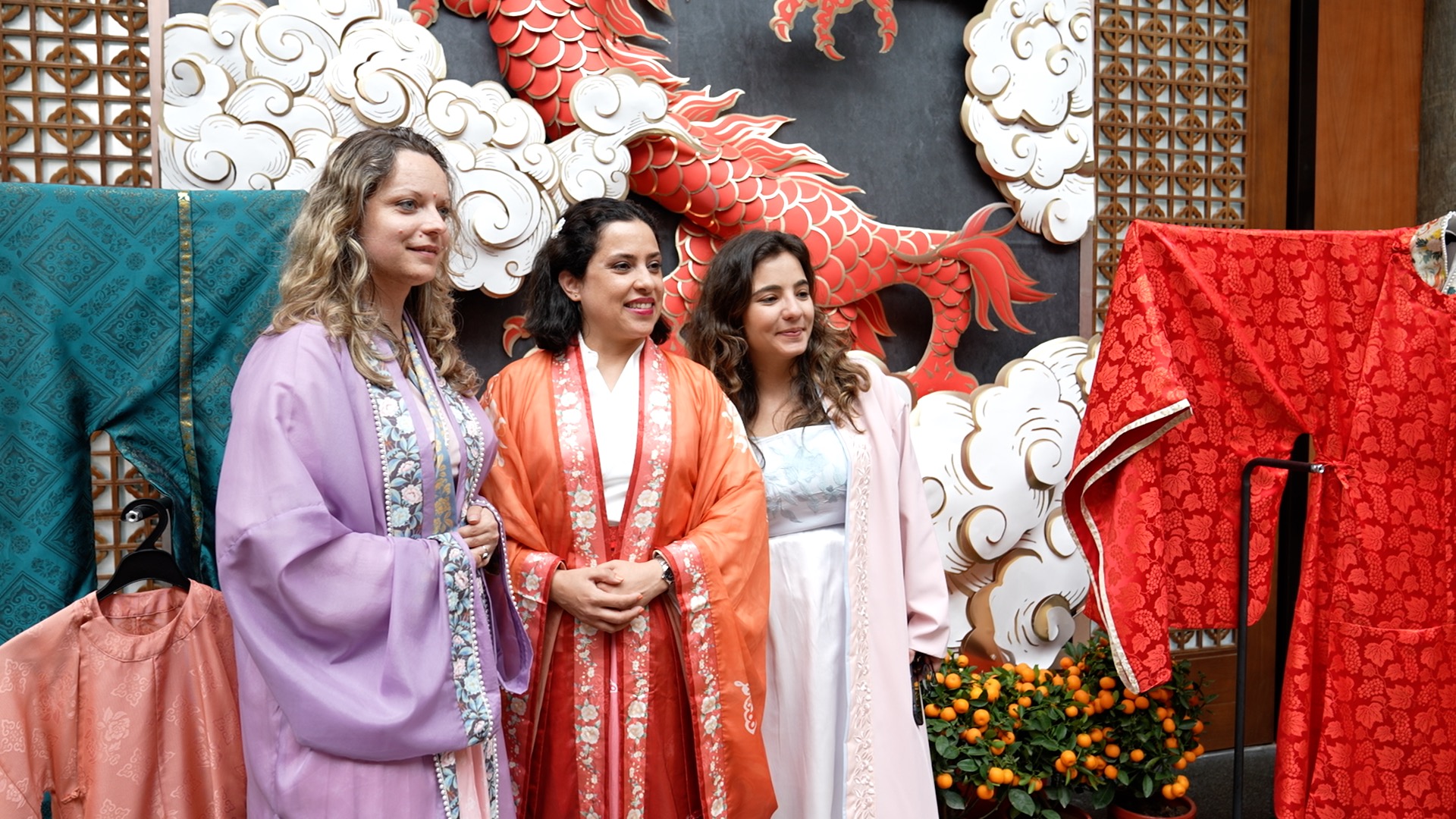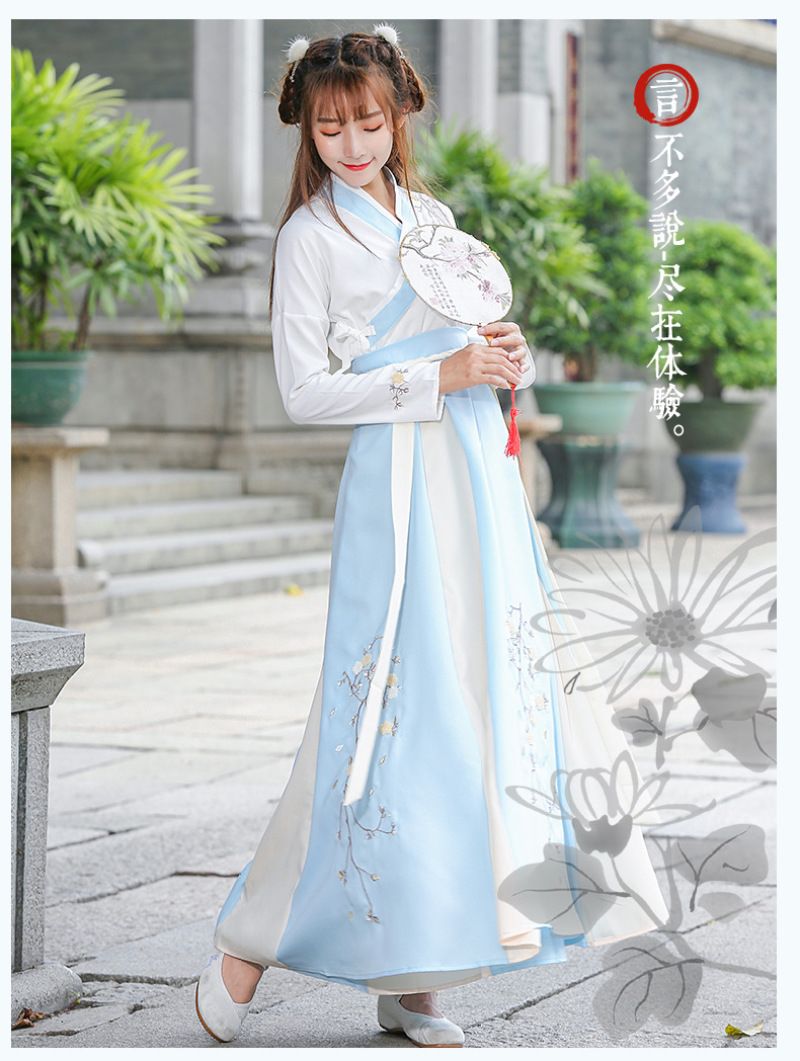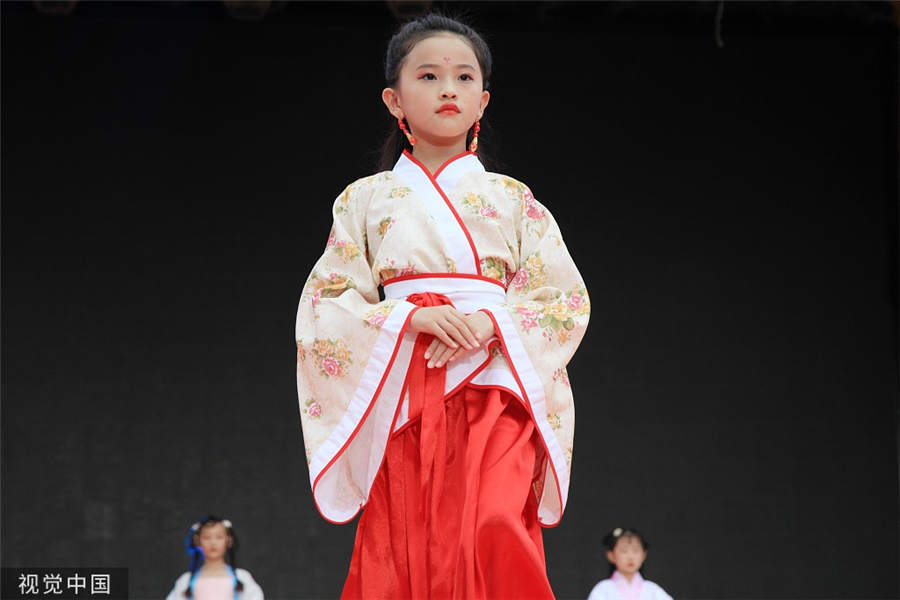Title: Embracing the Elegance of Ancient Chinese Hanfu Womens Clothing
The traditional Chinese Hanfu women's clothing has been gaining increasing attention in recent years. Embracing the elegance of ancient Chinese fashion, these garments are not only beautiful but also represent the rich cultural heritage of China. The Hanfu is characterized by its loose, flowy robes that drape gracefully over the figure, and its intricate details such as floral patterns, embroidery, and buttons. These clothes were worn by women of all social classes during different dynasties, from the Han dynasty to the Qing dynasty. Today, many people are fascinated by these garments and are wearing them in modern adaptations for special occasions or everyday use. By wearing the Hanfu, one can experience the beauty and grace of ancient Chinese culture while also embracing a unique and stylish fashion statement.
In the depths of China's rich cultural history, one cannot help but be captivated by the beauty and grace embodied in the traditional attire of its women. The Hanfu, or ancient Chinese clothing, is a testament to the country's artistic and aesthetic prowess, showcasing an array of intricate designs, colors, and materials that have withstood the test of time. This article aims to provide a comprehensive insight into the world of ancient Hanfu women's clothing, exploring its historical significance, cultural values, and contemporary relevance.
The Evolution of Hanfu Women's Clothing

The Hanfu, also known as the Han people's clothing, has its roots dating back to the Xia dynasty (21st-16th century BC). Over the centuries, it underwent various transformations, influenced by social, political, and economic changes within China. The Hanfu reached its pinnacle during the Tang dynasty (618-907 AD), when it was considered the epitome of elegance and refinement among the aristocracy. During this era, the Hanfu evolved into a complex system of garments, including robes, skirts, blouses, and sleeves, each adorned with intricate embroidery, patterns, and colors.
The Hanfu was not only a symbol of social status but also a reflection of the Chinese philosophy and aesthetics. It emphasized harmony, balance, and symmetry, often featuring elaborate designs that represented natural elements such as flowers, animals, and clouds. These motifs were intended to evoke a sense of harmony between humans and nature, as well as to convey the wearer's personality and character.
The Cultural Value of Hanfu Women's Clothing
The Hanfu holds great cultural significance for the Chinese people, embodying their long-standing traditions and customs. For instance, the way Hanfu is worn is highly regulated, with specific rules dictating where and how each garment should be placed on the body. The length and style of sleeves are also determined by age, gender, and social status, reflecting the hierarchical nature of Chinese society.
Moreover, wearing Hanfu is seen as a way to connect with one's roots and heritage, promoting a sense of identity and belongingness. Many young Chinese today still practice the art of traditional costume design and embroidery, preserving their culture and passing it down to future generations.

In modern times, the Hanfu has regained popularity among enthusiasts worldwide, who appreciate its beauty and uniqueness. The rise of social media platforms such as Weibo and TikTok has contributed to its widespread exposure, with many influencers showcasing their own interpretations of Hanfu fashion. The Hanfu has also been incorporated into mainstream fashion trends, serving as a nod to China's rich cultural heritage.
Contemporary Applications of Hanfu Women's Clothing
While the Hanfu may have originated from ancient China, its timeless elegance continues to captivate people from all walks of life. In recent years, there has been a renewed interest in incorporating Hanfu elements into modern fashion designs, creating a fusion between tradition and modernity.
One example is the "Hanstyle" fashion show held by luxury brand Louis Vuitton in 2018. The show featured models donning exquisite Hanfu outfits inspired by classic Chinese artworks and architecture. This collaboration between two seemingly disparate cultures not only showcased the versatility of Hanfu but also highlighted the importance of cross-cultural exchange and understanding.
Another application of Hanfu in contemporary fashion can be seen in the growing trend of ethnic Chinese streetwear. Many young designers are drawing inspiration from their cultural heritage by incorporating Hanfu elements into urban wear items such as bags, hats, and accessories. This trend not only celebrates Chinese diversity but also promotes self-expression and individuality in a rapidly globalizing world.

Conclusion
The Hanfu women's clothing represents more than just a piece of clothing; it embodies China's rich cultural heritage and artistic legacy. Its intricate designs, vibrant colors, and delicate craftsmanship continue to inspire awe and admiration among people around the world. As China continues to play an increasingly prominent role in global affairs, it is heartening to see its cultural treasures being appreciated and celebrated on a global scale.
Articles related to the knowledge points of this article:
Title: The Art of Tie Tying: A Guide for Students
Goose-Down Jackets: A Guide to the Best of the Bunch
Brand Womens Jackets and Coats: A Fashion Review
The Warmth of White Duck Down: The Story of a羽绒服白鸭绒
Title: Understanding the Symbolism and Significance of a Tie



